Before the Covid-19 lockdown in the UK began, I was casually shooting what had started to become a bit of a project. In reality, it’s little more than me loading Lomography Metropolis film into a Minolta Riva Panorama camera and taking fairly random photos – but for me personally, it became a little more than that.
As a hobbyist photographer, and blogger, I have some quite bad habits when it comes to the sorts of photos I take, when and why. One of the biggest shortcomings of being a blogger who talks a lot about lots of different cameras and lenses is that I tend to have a habit of buying a camera, shooting it, reviewing it, then moving on. Very rarely do I find a camera that I buy and decide to keep.
There are a few exceptions to this rule – cameras that for one reason or another captured my imagination a little more than others. There’s a few reasons this can happen. Sometimes it’s as simple as me just really liking the design of the camera, sometimes it’s for reasons of nostalgia or if a camera was a gift, and slightly more rarely, it’s when a camera offers me something entirely unique.
The Minolta Riva Panorama definitely falls into the latter category. As I talked about in in my original review, and indeed in a recent video I made about it, it might be a very simple camera that offers a very basic feature set, but somehow what it does offer gives me enormous satisfaction when shooting it. You can watch the video here:
That being said, when I picked it up and loaded it with a roll of Lomography Metropolis, I hadn’t actually used it for a very long time. In fact, it had spent a few month loaned out to Simon from the Classic Lenses Podcast. To be fair, this is not unusual for me. For the aforementioned reasons, I’m usually shooting something new to me – a camera that I’m going through the motions with for the sake of a review. Because of this, a lot of my “keeper” cameras don’t get a huge amount of action.
When I received the Lomography Metropolis off the back of their Kickstarter though, for some reason, the Minolta Riva Panorama just jumped out at me as the ideal camera to shoot it in. I’m not usually one for colour film that presents a strong colour shift, but there was something about the way that Metropolis looked that I quite liked. It’s not like their Purple film that’s out-and-out whacky, instead – at least in some of the photos I’d seen with it – I thought it looked more like a slightly enthusiastic cinema grade. So I figured I might as well shoot it in something that might play on that look slightly. The Minolta with its wide format framing seemed a good enough choice.
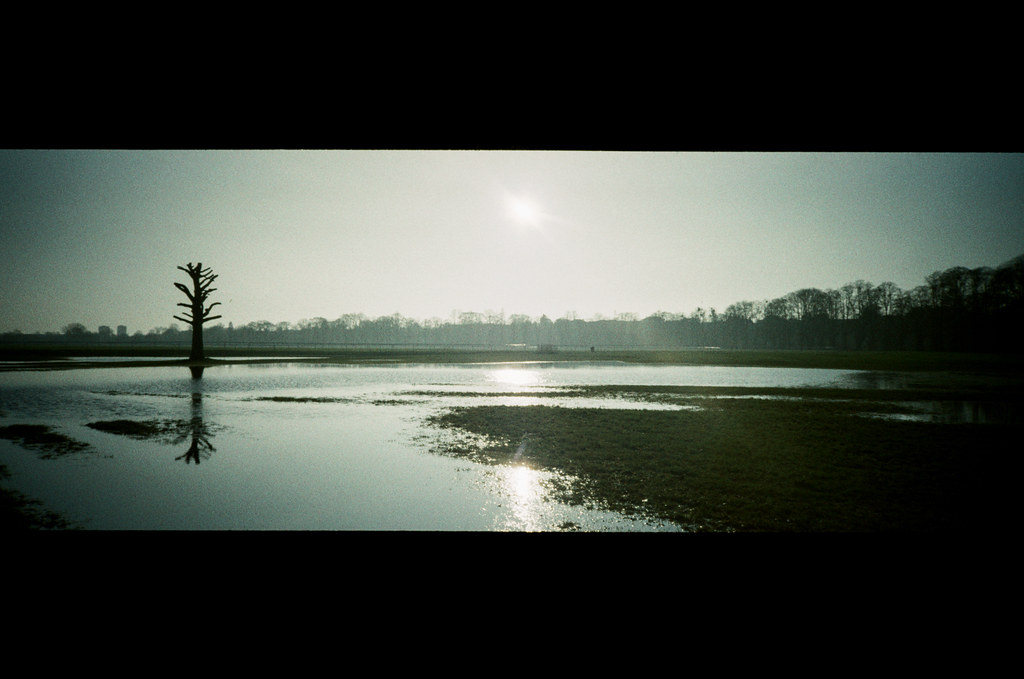
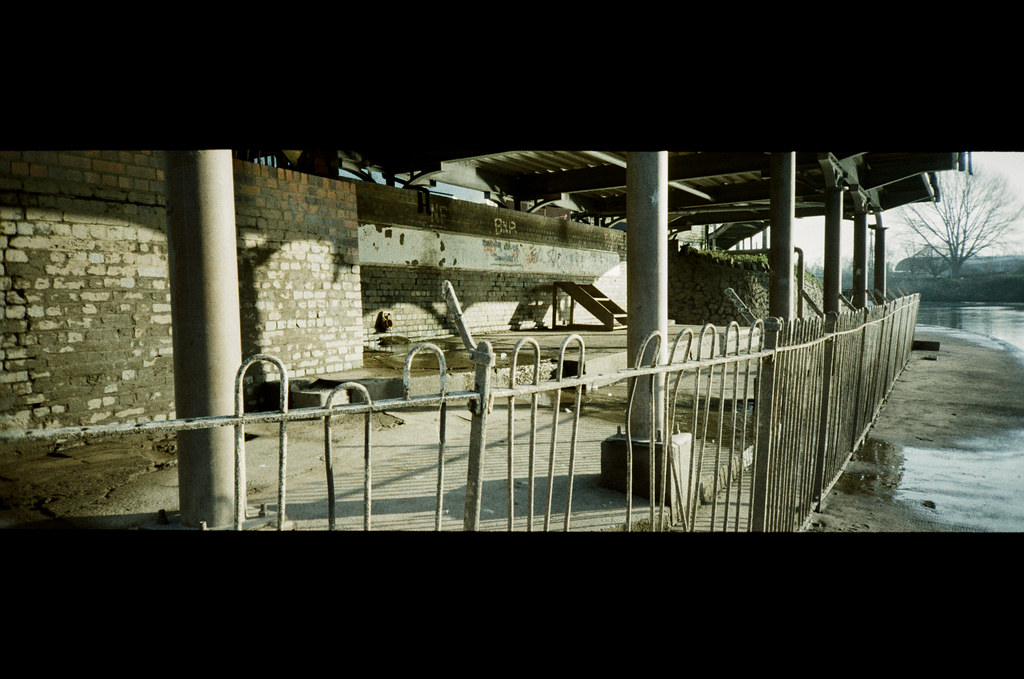
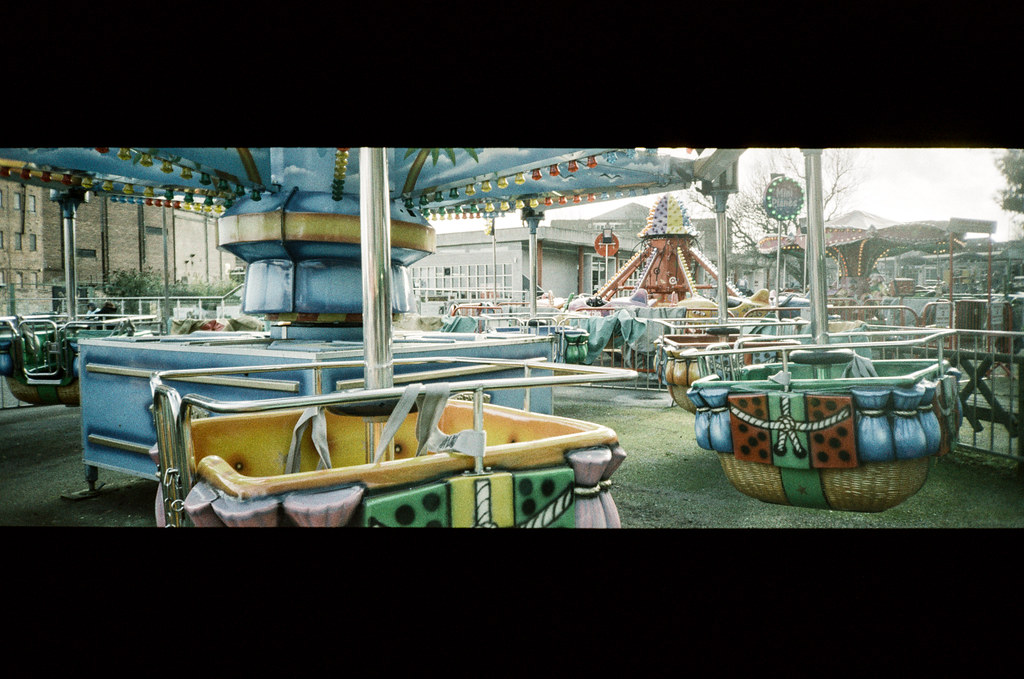
Of course, before I shot the first roll I didn’t really know how my results from Lomography Metropolis was going to turn out. The thing with with films that are designed to have a strong look is that how that strong look actually comes out in practice can be quite variable. This depends on a number of factors. In the case of Metropolis, the first is apparently at what exposure index you shoot it at. The rated speed is 100 to 400 ISO, but it doesn’t have a DX code on the film. The Riva Panorama has no manual control for setting exposure index, and defaults to 100 when there’s no DX code. So EI100 it was to be. That said, with most colour films, provided there isn’t any underexposure or dramatic overexposure, in my experience the chosen method of digitisation – and of course any post process – is what impacts on the look the most anyway.
I use a Noritsu LS1100 scanner to digitise my 35mm film, and like a lot of scanners – especially commercial lab scanners – its job is to correct colours as best as it can as part of its automatic process. The extent to which it’s capable of this varies from one film to the next, and indeed depends on how well the film is exposed. But nonetheless, I did expect it to correct some of the colour shift out of the film when compared to the very yellow look that the Lomography Metropolis was marketed on.
I was right in this assumption too. When I the shots from my first roll came out, I was actually a little surprised about to the extent it has succeeded in correcting the film. This stuff has an unusually yellow base, so I would have expected that to show through a lot more. Instead, what I actually got somehow appealed to me a lot more. The colours are far from natural, and that yellow base is definitely visible especially in highlights, but in my scans I think it has a really nice look to it.
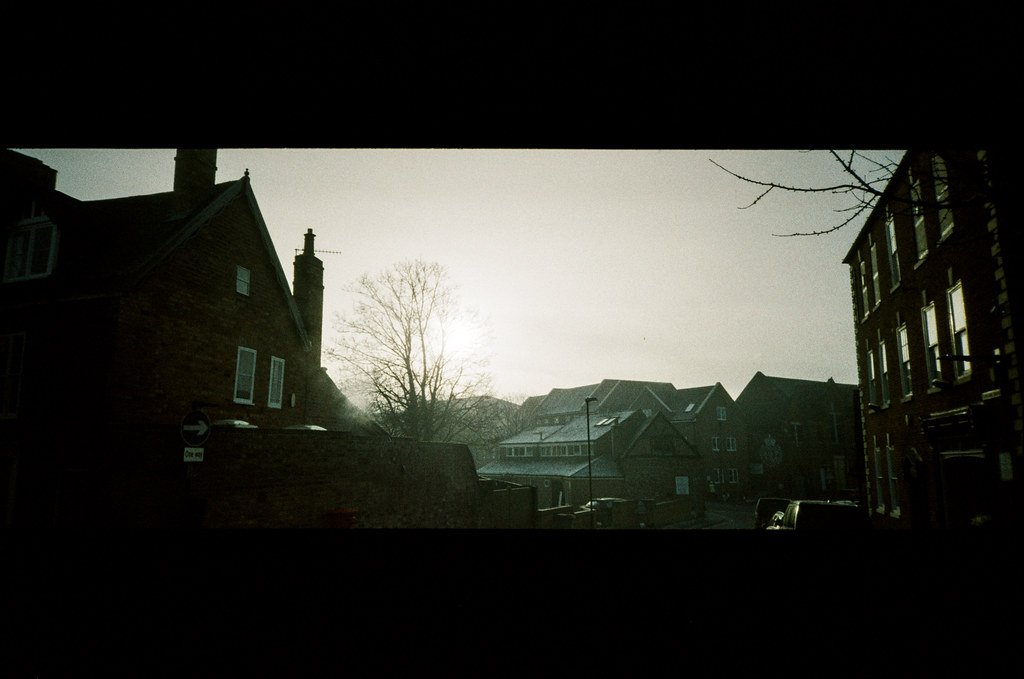
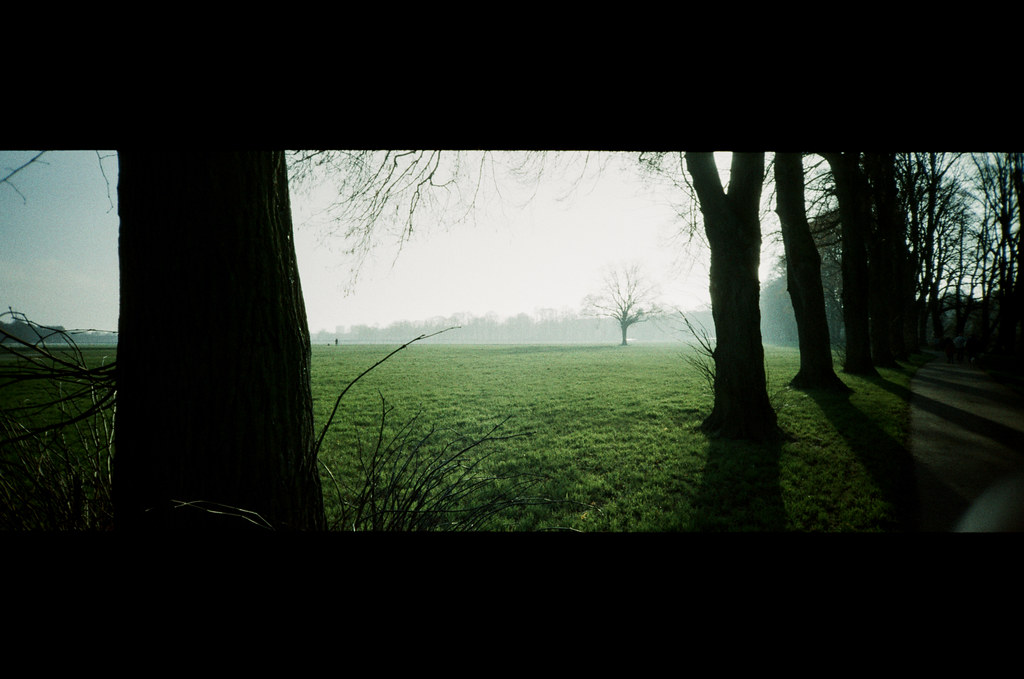
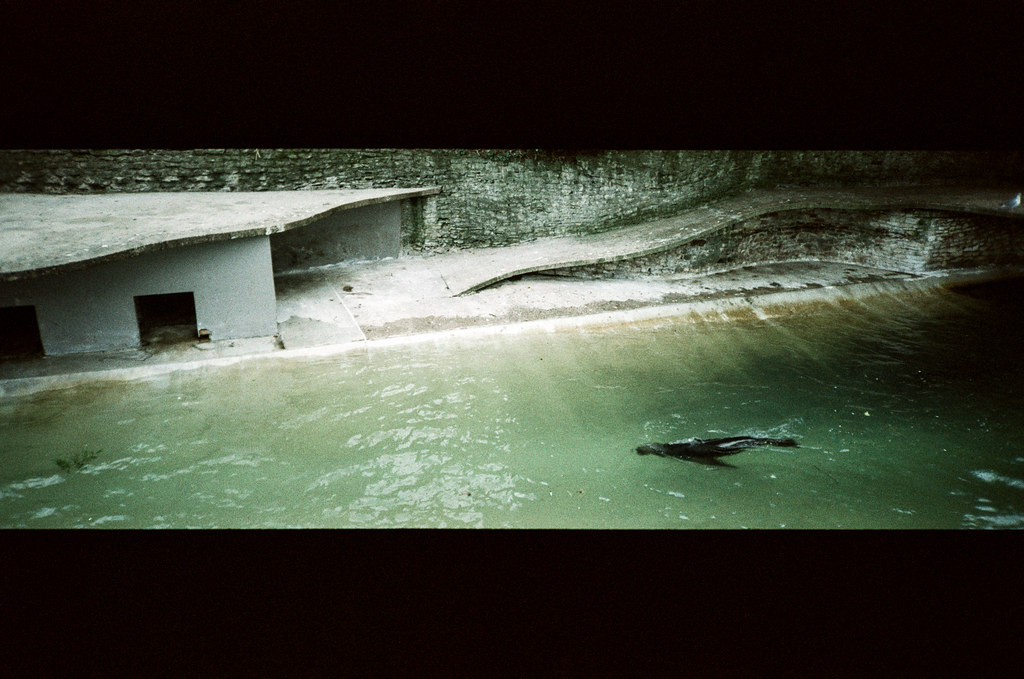
In fact, I’d go as far to say that I found myself really pleased with the first results. The way my workflow had impacted on the colours to produce images I liked the look of was one thing, but there was more to it than that.
When I first shot the Minolta Riva Panorama I had enjoyed it a great deal, but I found myself feeling like I was detracting something from the results a little in the way I was using it and processing the photos. With the camera being a crop panorama 35mm camera it just uses a centre strip of the frame leaving the top and bottom of the frame unexposed. As I talk about in my review, and indeed the video above – unlike in cameras where this is a switched option – the viewfinder in the Riva Panorama is big and wide. The result of this is that in shooting it, it feels like a “proper” panoramic camera. The lack of full frame shooting option somehow validates the crop format.
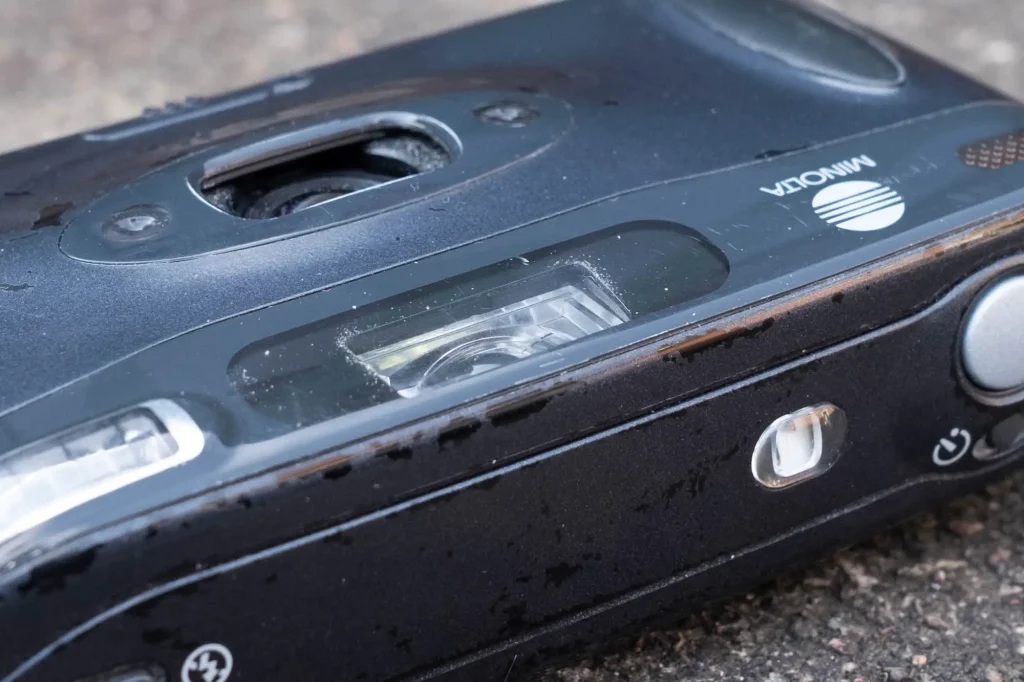
Of course, when scanning the frames, you still get 3:2 35mm frames, they just have black bars across the top and bottom. When I first shot it, I was taking the images into Lightroom and cropping those bars off leaving me with just the exposed part of the photo. And this is where I felt I was detracting something from the images. Once I’d cropped the image, I was then able to crop further to correct framing or level a horizon etc. The funny thing is, I do this all the time with photos from all my other cameras. Some people have issue with cropping in post or when printing, but I don’t – I just see it as part of the process.
With the Riva Panorama though, chopping the top and bottom black strips off felt like I was taking something away from the image just for the benefit of correcting something else. The frustrating thing about doing this was that whilst I sometimes preferred the end result overall, I really liked the look of the un-cropped images with the black bars in place. Somehow the black bars added something to the overall aesthetic and when I was still taking them off images that didn’t need to be corrected for a wonky horizon, I felt like I was ruining the photo somehow.
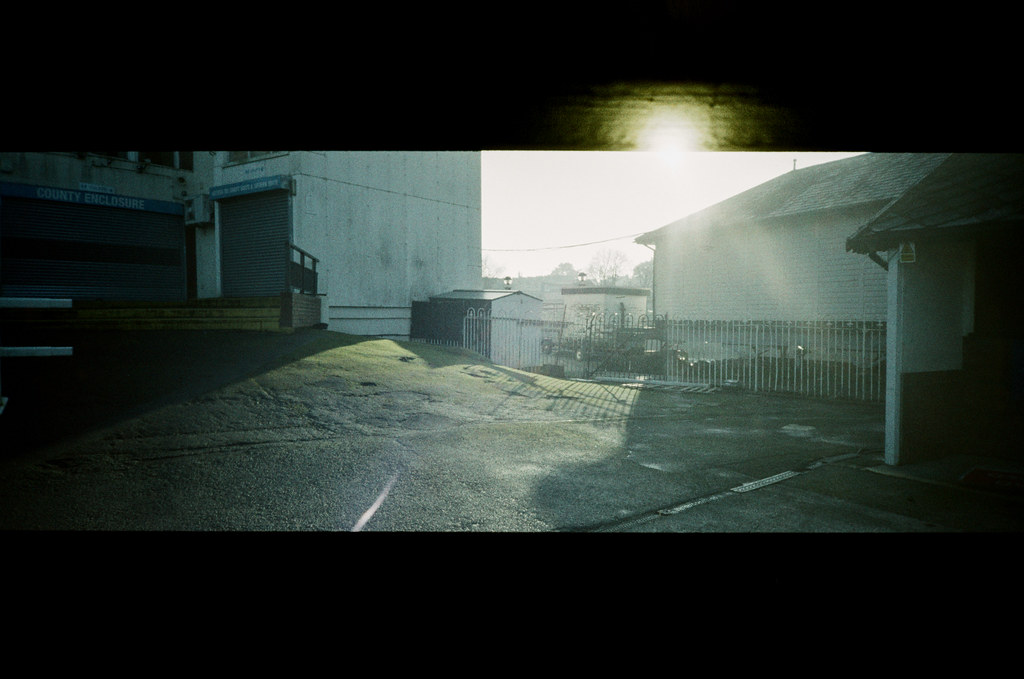
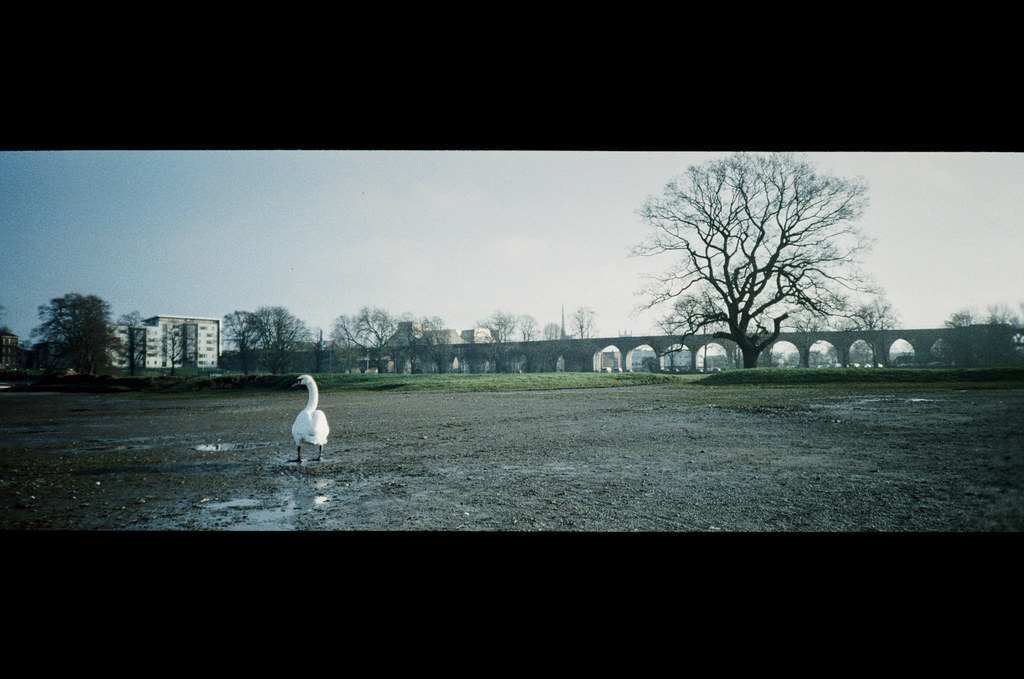
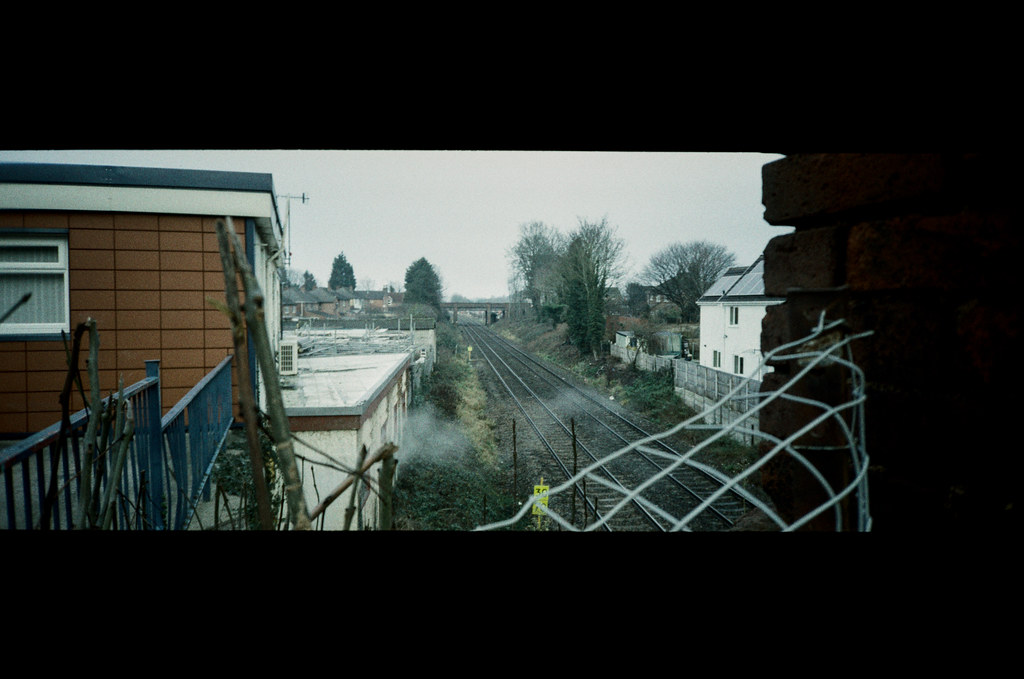
Long story short, when I got the first roll of Lomography Metropolis back, I decided against cropping the black bars off, regardless of any wonky horizons. I set myself that as a little rule and decided I was going to stick to it – I just couldn’t be doing with the idea of over processing or thinking about these images, and this felt like a good way to help stop that happening. What I didn’t realise when I did this was that I really would find it as a self imposed limitation quite mentally freeing. The result was just what and as it was. If I wasn’t happy with it I’d bin it off, but if I liked it I was even more happy with it because I hadn’t agonised over it too much.
To add to this, I then decided that I would not tweak the colours too much further than the automatic correction in scan or in post. There is a bit to do in-scan anyway as the scanner tries to correct for the black bars by upping the exposure of the whole image, so that has to be corrected. But other than that, rather than scanning the Lomography Metropolis images flatter and readjusting them in post to eye as I usually do, I decided to just let the scanner do its thing and then do even less in Lightroom. My normal process involves me trying to correct colours as close to how I remember them – but there is no point in me doing that here, as that would be fighting the nature of the film. If I wanted “normal” colours, I could just shoot a “normal” film.
Again, accepting the slight Lomography Metropolis colour shift from felt freeing. Combined with the fixed framing, my process became just about picking the shots I like, making the tiniest tweak to the contrast, and I was done. I found myself tapping a little bit into that straight-out-of-camera-film-photography mentality that some people have. Admittedly I was doing a little bit in the scan and lightroom – I refuse to let the scanner make all the choices – but it was a lot less than I usually do, and really, I can’t argue with how much I enjoyed this slimmed down process.
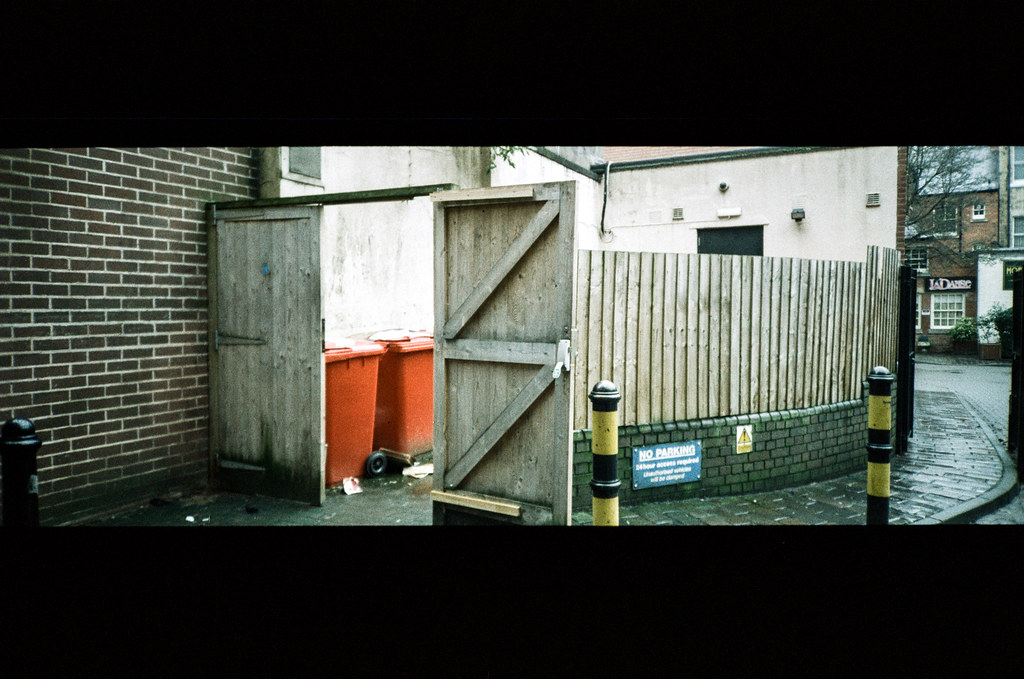
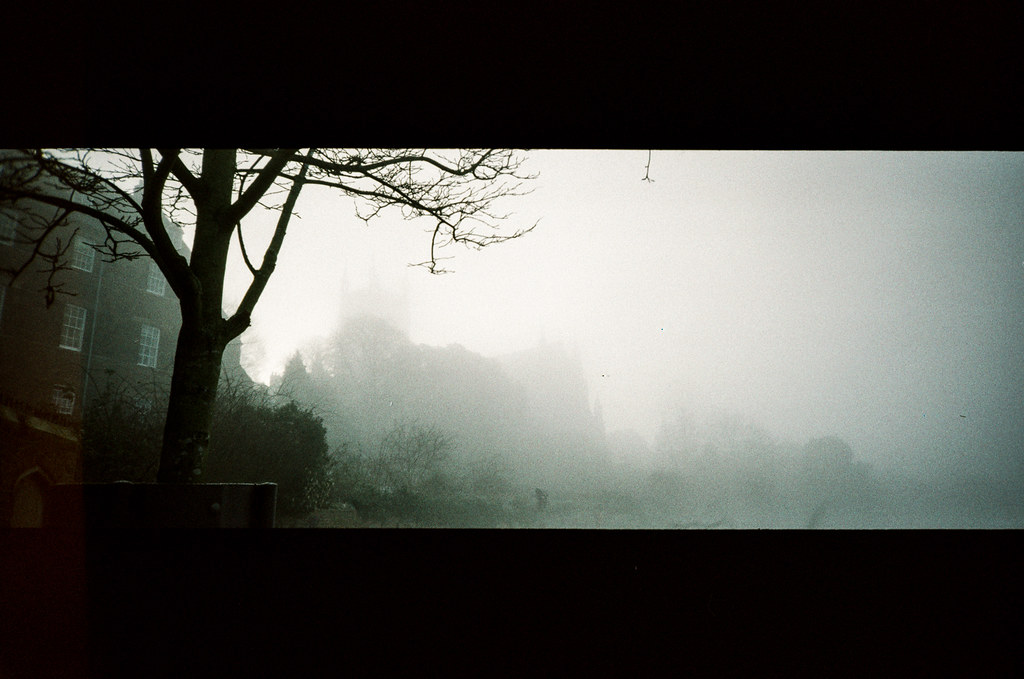
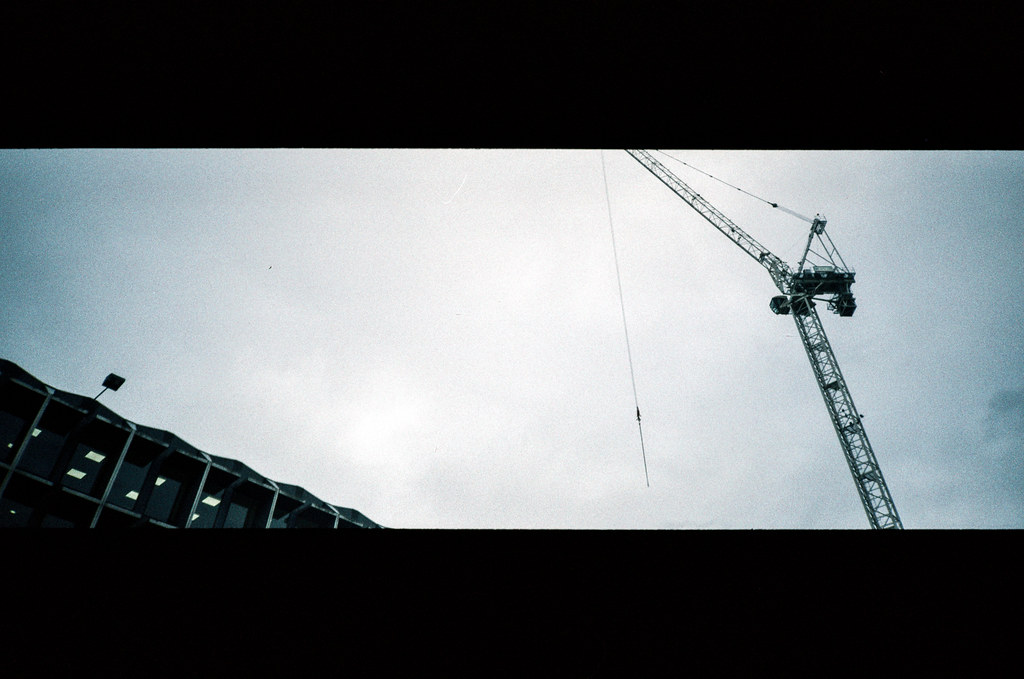
And all this isn’t really even the best of it! All of this started back in late December when I loaded the first roll of Lomography Metropolis into the camera and went out for a walk with Hannah. I’d had a crappy year when it came to my photography, and that particular occasion had been a little bit of a turning point in me getting over it and starting to enjoy my photography again – I wrote about that experience here. So when these results came out really nicely – and in a way that meant I didn’t have to do anything to them to achieve a something I quite liked – it all felt was all the more satisfying!
Of course, 2 1/2 rolls of Lomography Metropolis in and lockdown has stopped me in my tracks a bit. I have taken a few frames in the garden, but I’m not quite as pleased with the ones I took before. But, looking back at the photography I did in the beginning part of the year, the shots I took with the Riva Pano feel like some of the ones I enjoyed taking the most. I think apart from anything else, I’d just found myself tapping into the point & shoot mentality that I enjoy so much. It’s the mentality that started this website, and I forget that sometimes.
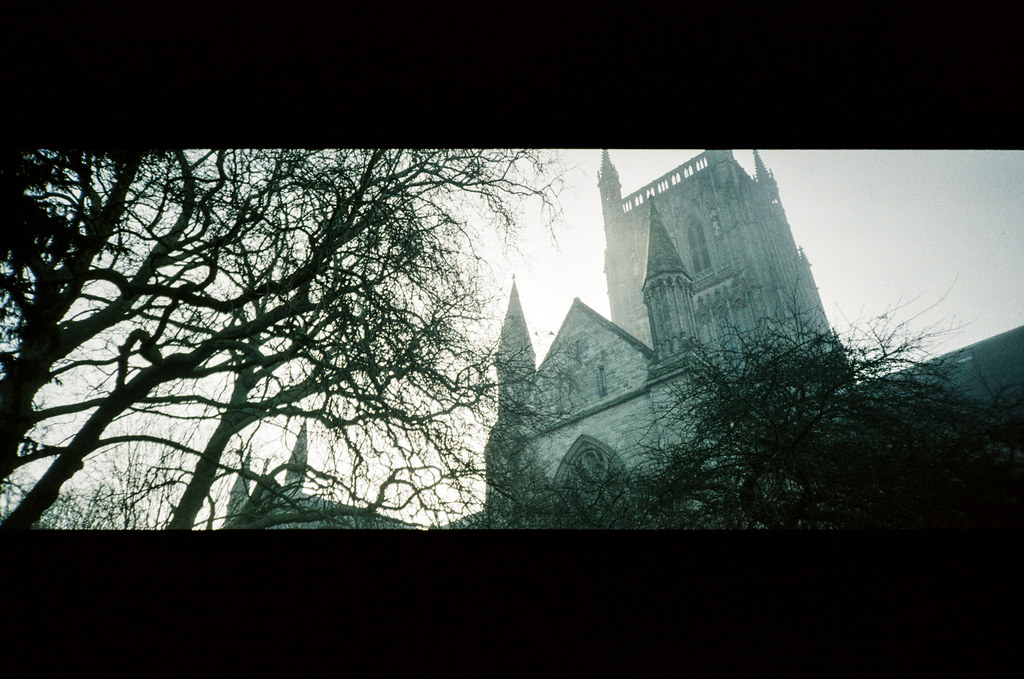

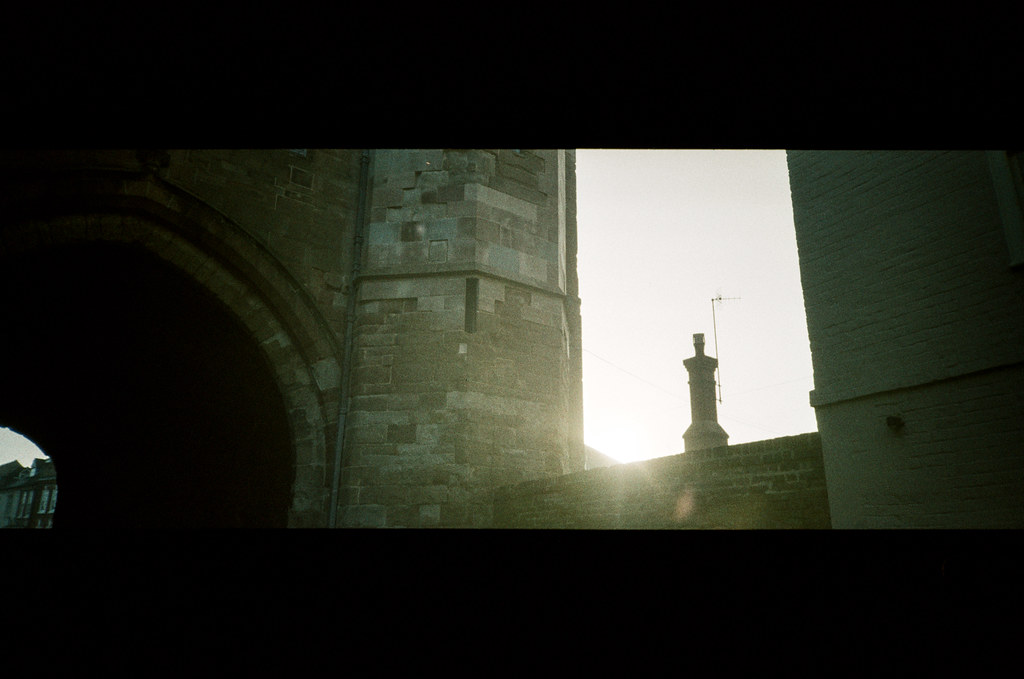
In fact, to a lesser or greater degree, I think I have let myself slip toward a mentality where I’m broadly only more accepting of “good quality” results, which can sometimes put me off shooting point & shoot cameras as all. Which in hindsight, feels a bit of a shame. So yeah, I’m glad for the experience with both camera and this slightly weird Lomography Metropolis film, and think I’m going to continue in the process of trying to get back to not worrying so much and just enjoying the process… that is, at least, when we can all get out and about with a little more freedom.
In fact, I’m so pleased with the results, that I might see if I can make a super-cheap zine out of them – is anyone has any tips on that front, let me know!
You can find more content on 35mmc about Lomography Metropolis here, and the Minolta Riva Panorama here
Share this post:
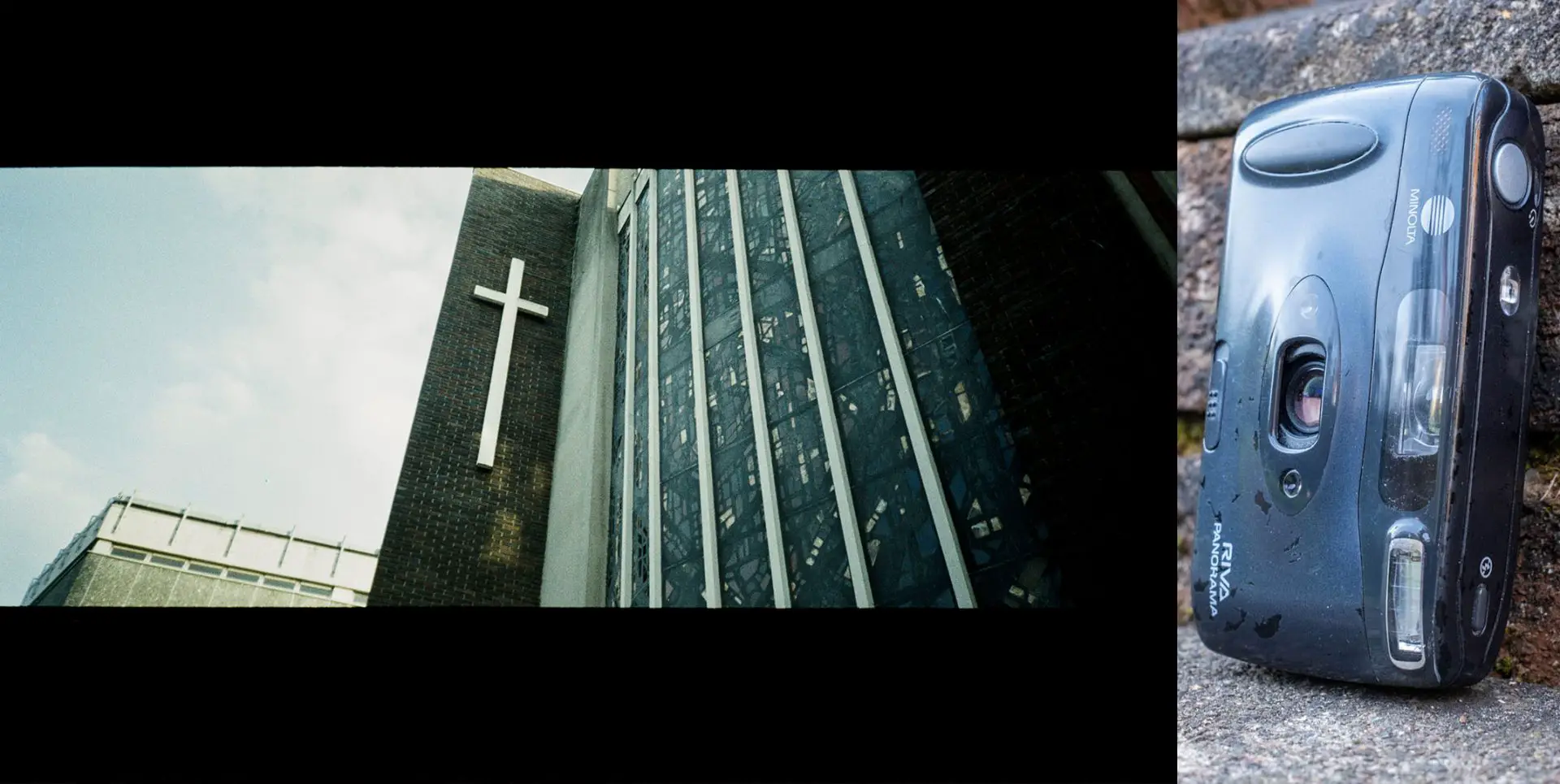








Comments
Marcel Zyskind on Lomography Metropolis Film and the Minolta Riva Panorama
Comment posted: 18/05/2020
Torsten Kathke on Lomography Metropolis Film and the Minolta Riva Panorama
Comment posted: 18/05/2020
Mark C S on Lomography Metropolis Film and the Minolta Riva Panorama
Comment posted: 18/05/2020
Neal A Wellons on Lomography Metropolis Film and the Minolta Riva Panorama
Comment posted: 18/05/2020
The review was wonderful and your Metropolis color photo of the Carnival really blows my mind. Absolutely wonderful.
Comment posted: 18/05/2020
Tobias Eriksson on Lomography Metropolis Film and the Minolta Riva Panorama
Comment posted: 18/05/2020
FYI I have recently exposed two rolls in a Fujifilm Fotonex 100ix APS camera exclusively in Panoramic mode. I very much enjoyed composing in pano, which I rarely do. I might write a post on the experience...
Comment posted: 18/05/2020
Rock on Lomography Metropolis Film and the Minolta Riva Panorama
Comment posted: 19/05/2020
Roger B on Lomography Metropolis Film and the Minolta Riva Panorama
Comment posted: 19/05/2020
Comment posted: 19/05/2020
Mike on Lomography Metropolis Film and the Minolta Riva Panorama
Comment posted: 21/05/2020
I see the black bars on the panoramic but - What is the difference, advantage between panoramic and an ultra wide lens?
Comment posted: 21/05/2020
Theo on Lomography Metropolis Film and the Minolta Riva Panorama
Comment posted: 27/05/2020
Spencer on Lomography Metropolis Film and the Minolta Riva Panorama
Comment posted: 22/07/2020
Comment posted: 22/07/2020
HongKonger on Lomography Metropolis Film and the Minolta Riva Panorama
Comment posted: 27/02/2021